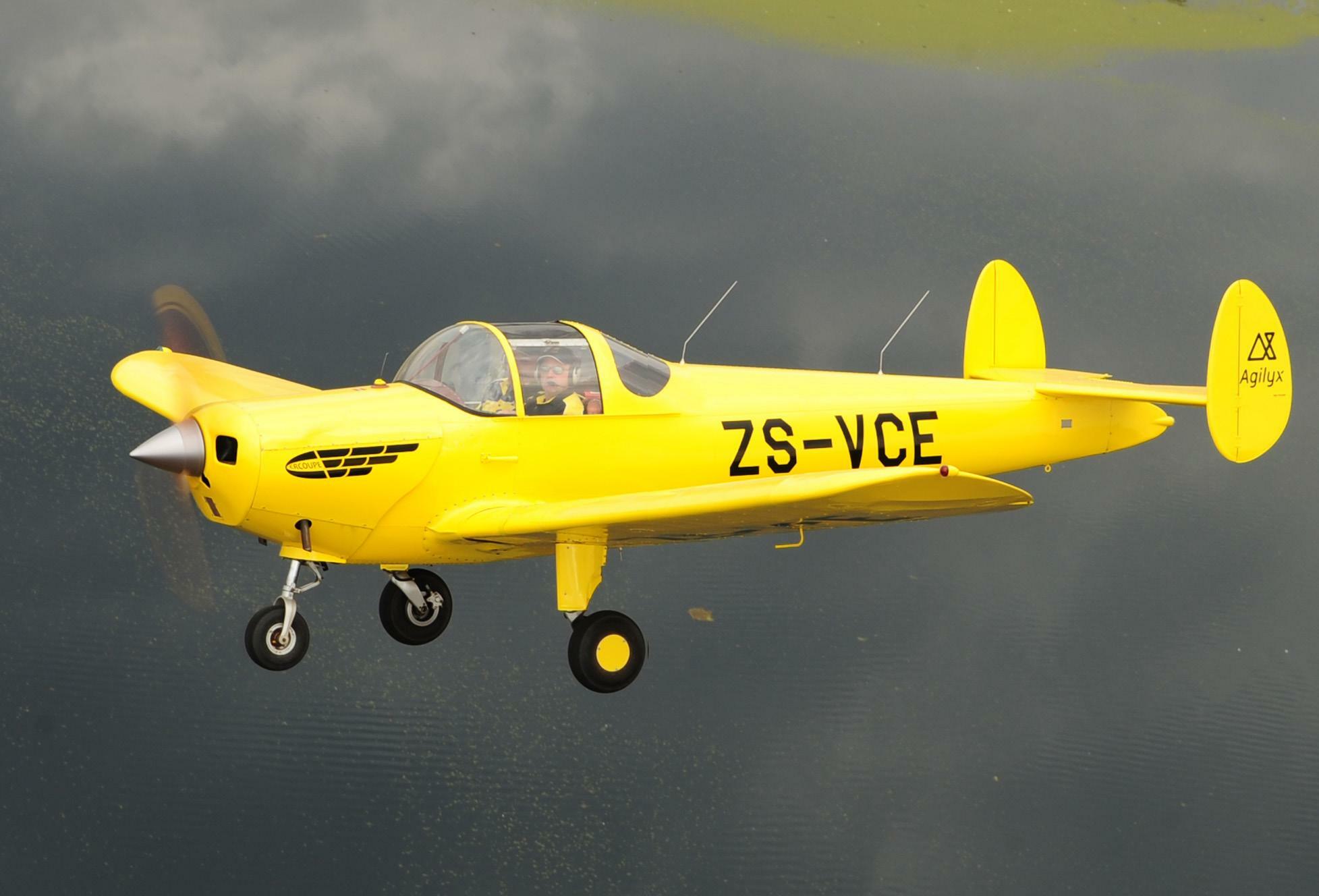ERCO ERCOUPE A WONDERFUL LITTLE PLANE!

THE ERCOUPE'S DEVELOPMENT goals were ambitious and revolutionary for the 1930s. A two-seater plane that would be safe, and aboveall, easy to fly. It had to be stall and spin proof and have a cruise speed of 100 mph - with just a 65 hp engine.
The development of such a plane began in the 1930s, when a small group of engineers at the NACA Laboratories started a private study that resulted in the building of the W-1 and W-1A prototypes having the these for then, very unconventional features:
1. The tricycle landing gear with castering nose wheel.
2. Strong longitudinal and lateral stability with limited upward elevator travel to prevent loss of control due to stalling and spinning.
3. Flaps to reduce the stall speed.
4. Dual controls for instruction.
Development
In the 1930s light aircraft designers were stuck in the paradigm of rag and tube taildraggers with tandem seating and control sticks.
Stall-spin accidents and ground loops were common so aerodynamicist Fred Weick began experimenting with aircraft designs that would eliminate them. Weick's first design was called simply the W1 and it won a competition for a stall and spin-proof plane. On the strength of his prize-winning design, he partnered with Engineering Research Company (ERCO) and changed his design to a low-wing model that became the ERCO Ercoupe.
The first flight was in 1937, with production following immediately. The 75-horsepower machines were inexpensive and a step above virtually everything else on the market. As the Great Depression ended, 112 were built, but production was stopped by World War II.
With the end of the war, Ercoupe joined the boom and bust of 1946 to 1948. Five thousand Ercoupes, with horsepower from 75 to 90, were rolled out of the factory in the two years before it closed.
Diese Geschichte stammt aus der November 2022-Ausgabe von SA Flyer Magazine.
Starten Sie Ihre 7-tägige kostenlose Testversion von Magzter GOLD, um auf Tausende kuratierte Premium-Storys sowie über 9.500 Zeitschriften und Zeitungen zuzugreifen.
Bereits Abonnent ? Anmelden
Diese Geschichte stammt aus der November 2022-Ausgabe von SA Flyer Magazine.
Starten Sie Ihre 7-tägige kostenlose Testversion von Magzter GOLD, um auf Tausende kuratierte Premium-Storys sowie über 9.500 Zeitschriften und Zeitungen zuzugreifen.
Bereits Abonnent? Anmelden

PIPISTREL'S ELECTRO VELIS
THE FUTURE IS HERE!

LIVING THE DREAM-HEADING OFFSHORE
I dearly miss the mountains of the Western Cape, but I'm soon reminded that my \"office\" offers one of the best views, regardless of where I happen to be located on this planet. Today is no different, as ocean, clouds, and sunrise all conspire to produce a breathtaking vista while we settle down in the rhythmic gallop of the big Sikorsky.

CANADIAN C152 spin
Jim’s Note: The SACAA seem to have lost all but the newest and oldest accident reports. This is not a bad thing because I have found Canadian reports are excellent and have selected this one, because it deals with issues very relevant to South Africa – particularly density altitude, spinning, and post maintenance test flight

SPECIAL RULES AREA CHARTS
Imagine a chart that doesn’t rely on batteries that unexpectedly let you down. Imagine one that covers a large area in detail, yet that weighs a few grams.

FLIES ON THE CEILING
Allow me for a moment to explore one of the great mysteries of aviation with a subject that has been around ever since Immelman rolled his Fokker rightway up at the top of a loop over the shell-holed killing fields of World War 1.

INTERESTING AVIATORS I HAVE MET
I remember back in 1960 being in Nairobi West (where Wilson Airport is situated) standing with my mother watching a train pass by, filled with refugees from the Belgian Congo. The train was full, with many of the people dressed in pyjamas, or whatever they could find to wear in their haste to leave.

EVACUATOR
I have had a lot of fun during this past few years of flying. I have sneaked a Twin Otter out of Algeria, over Libya, to Tripoli and thence, across the Mediterranean, to the historic twinkling jewel box of Malta, at night.

WHY AIR POWER IS KEY in the Ukraine War
There is evidence that with 'borrowed' F-16s and the recent arrival of French Mirage 2000s, improved Ukrainian air superiority may be the deciding factor that brings the Russians to the peace talks table.

JANUARY 2025
The new year is off to a good start with 15 aircraft having been registered.

FLYING AROUND THE KZN AIRFIELDS
In less time than it takes to drive from one side of Johannesburg to the other, you can fly to beautiful KZN to experience amazing scenery and some fantastic airfields and hospitality.
